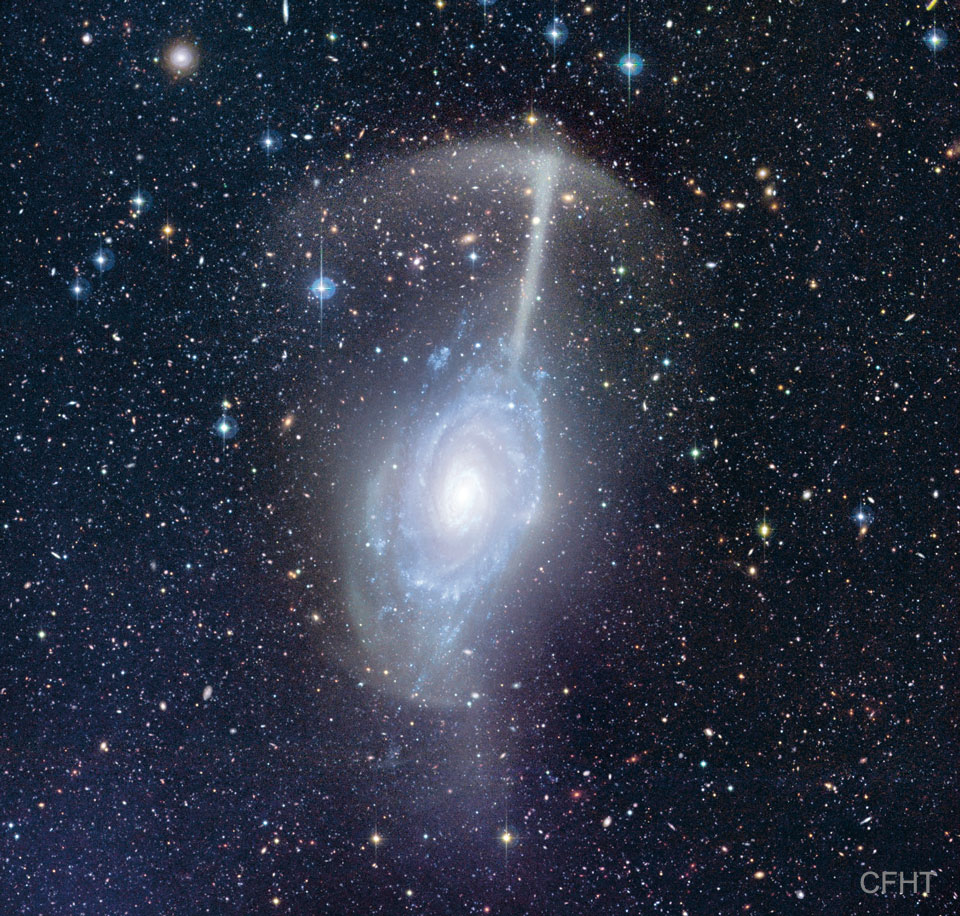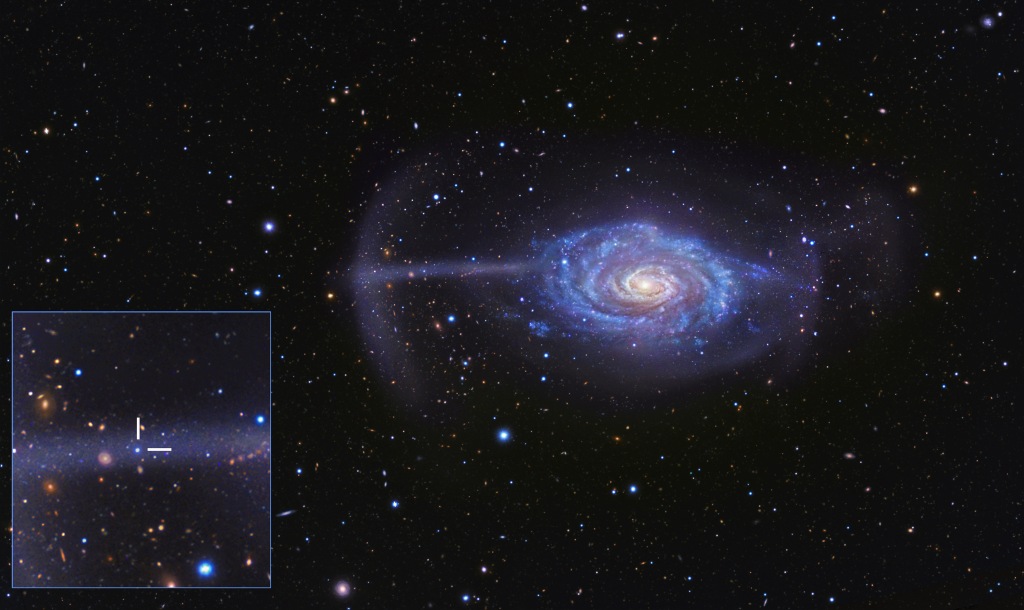The umbrella of NGC 4651 is indeed dramatic-looking. Today's APOD is very fine, but I prefer the
APOD of July 2, 2014, which shows more clearly the "counter-jet" on the opposite side of the disk of NGC 4651. The APOD by R. J. GaBany et.al. also identifies the core of the small shredded satellite galaxy whose tidal remnants give NGC 4651 its umbrella-like shape. The "counter-tail" on the opposite side of NGC 4651 shows that the larger galaxy is also affected by the tidal forces that have torn the small satellite galaxy to shreds.
What about the outer arc, the "canopy" of the umbrella? It must be caused by the pile-up of material that has previously been shed by NGC 4651. But the way the "shaft" of the umbrella seems to stab the "canopy" of it makes it look as if the shaft of the umbrella was a jet emitted by a central black hole of NGC 4651. However, the soft smooth and intermediately-colored appearance of the "jet" clearly suggests that this is a stellar stream, made up of the sort of old metal-poor stars that we expect to find in a spheroidal dwarf galaxy, and not a violently emitted jet of ionized plasma that we expect from a black hole.
Another galaxy that displays a "jet" and an "arc" is NGC 3310, the Bow and Arrow Galaxy:
In the case of NGC 3310, the jet is clearly made up of young stars, which seem to have been flung out of the galaxy due to violent processes caused by a past merger. It seems likely (to me at least) that some of the young stars have formed "in situ" as a large helping of gas was flung out of the NGC 3310 galaxy proper.
Note that the "Bow" of NGC 3310 is made up of much older stars than the "Arrow", whereas in NGC 4651 the "Shaft" and the "Canopy" of the umbrella seem to be made up of the same sort of intermediate to old stars.
Note, too, that in NGC 3310 the "Arrow" seems to penetrate right through the "Bow", which, however, does not seem to feel "the pain of the arrow". Maybe the arrow is not "touching the bow". The arc-like structure of the bow could be a foreground object that partly hides the arrow.
Similarly, perhaps the shaft of the umbrella is unconnected to the canopy of it. Perhaps they are seen in silhouette and just seem to touch from our perspective.
Ann
 NGC 4651: The Umbrella Galaxy
NGC 4651: The Umbrella Galaxy

